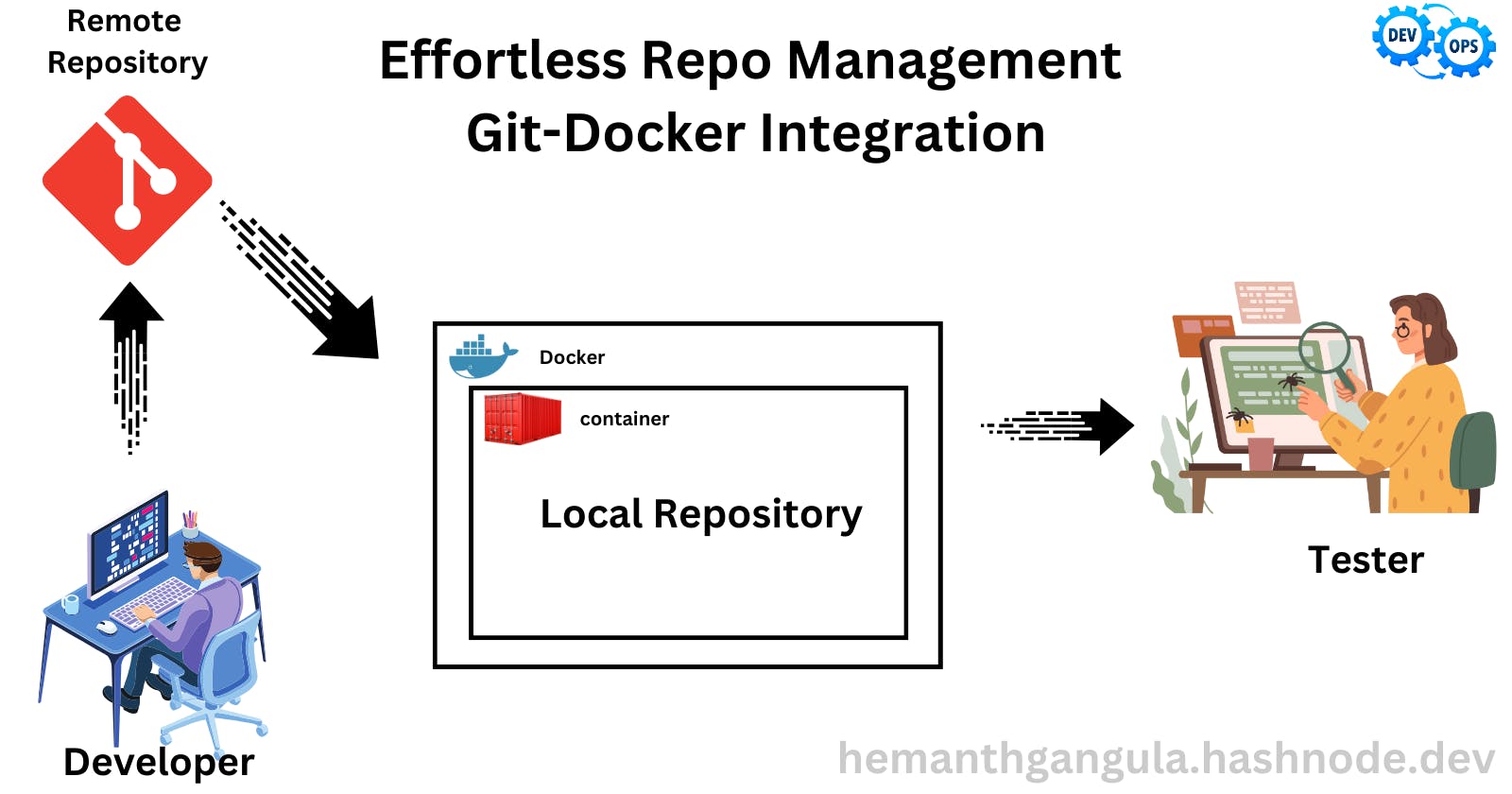Automating Code Updates from Git to Docker for Seamless Testing
Discover the Key to Effortless Repo Management: Explore the Seamless Integration of Git and Docker for Optimal Workflow
Imagine a scenario in a software development environment where developers frequently push updates to a Git repository, and testers need to continuously test these changes in a controlled environment. By automating the process of updating code from Git to Docker, testers can seamlessly access the latest version of the application for testing purposes.
To access the code execution and configuration instructions for this project, please visit the GitHub repository at the following link:
There, you'll find comprehensive details, including step-by-step configuration and usage instructions.
Developer Workflow:
Code Updates: Developers sculpt new features and troubleshoot bugs in their local environments.
Git Commit & Push: Upon completion, developers commit and push their code to the Git repository, signaling its readiness for integration.
Automated Script Execution: Enter the protagonist, the
repo-manager.shscript. This script, residing within the Docker container, perpetually monitors the Git repository for changes, orchestrating the crucial steps of cloning the repository, monitoring for updates, and seamlessly pulling changes into the local repository within the Docker container.
Automation Process:
Dockerfile Configuration: The Dockerfile acts as the master plan, delineating instructions for Docker image construction. It's imbued with directives to clone the Git repository and establish the application environment.
Docker Image Build: With every new commit, the Docker image awakens, automagically incorporating the updated code from the Git repository.
Container Deployment: Armed with the latest code changes, the Docker container is swiftly redeployed, ensuring it mirrors the zenith of the application's evolution.
Tester Workflow:
Access to Docker Container: Testers wield the keys to the Docker container kingdom, where the application thrives. With a simple command, they summon the latest version of the container image, ensuring their testing efforts are anchored in the most current code.
Continuous Testing: Empowered by the latest updates, testers embark on their quest for excellence, conducting rigorous tests with the confidence that they're scrutinizing the epitome of the latest developer commits.
Benefits:
Efficiency: Developers delve into coding depths without the burden of manual environment updates, allowing their creativity to flow unhindered.
Consistency: Testers revel in the glow of the most recent application version, fostering a testing environment that perpetually mirrors the latest code changes.
Real-Time Feedback: Developers receive a steady stream of insights from testers, enabling rapid issue resolution and iterative enhancements.
Streamlined Workflow: Automation liberates teams from the quagmire of manual intervention, paving the way for a smoother, more agile development and testing journey.
Conclusion:
By orchestrating the seamless transfer of code from Git to Docker through automation, developers, and testers forge a symbiotic relationship that propels them toward excellence. This real-time use case underscores the transformative impact of automation, ensuring that the testing environment remains a bastion of innovation, constantly bathed in the radiance of the latest code changes.
